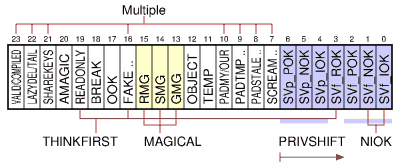pIOK is how Devel::Peek represents the bit corresponding to bit mask SVp_IOK. The p indicates a "private" flag, and it forms a pair with "public" flag IOK (bit mask SVf_IOK)
The exact meaning of the private flags has changed across perl versions, but in general terms they mean that the IV (or NV or PV) field of the SV is "inaccurate" in some way
The most common situation where pIOK is set on its own (pIOK is always set if IOK is set) is where a PV has been converted to a numeric NV value. The NV and IV fields are both populated, but if the IV value isn't an accurate representation of the number (i.e. it has been truncated) then pIOK is set but IOK is cleared
This code shows a way to reach that state. Variable $pi_str is set to a string value for π and it is converted to a floating-point value by adding 0.0 and storing it into $pi_num. Devel::Peek now shows that NOK/pNOK and POK/pPOK are set, but only pIOK while IOK remains clear. Looking at the IV value we can see why: it is set to 3, which is the cached value of int $pi_str in case we need it again, but it is not an accurate representation of the string "3.14159" in integer form
use strict;
use warnings 'all';
use Devel::Peek 'Dump';
my $pi_str = "3.14159";
my $pi_num = $pi_str + 0.0;
Dump $pi_str;
output
SV = PVNV(0x28fba68) at 0x3f30d30
REFCNT = 1
FLAGS = (NOK,POK,IsCOW,pIOK,pNOK,pPOK)
IV = 3
NV = 3.14159
PV = 0x3fb7ab8 "3.14159"\0
CUR = 7
LEN = 10
COW_REFCNT = 1
Perl v5.16 and before used to use the flag to indicate "magic" variables (such as tied values) because the value in the IV field could not be used directly. That was changed in v5.18 and later, and magic values now use pIOK in the same way as any other value


SVp_IOKwill be true andSV_IOKwill be false, will not? – Broadnax